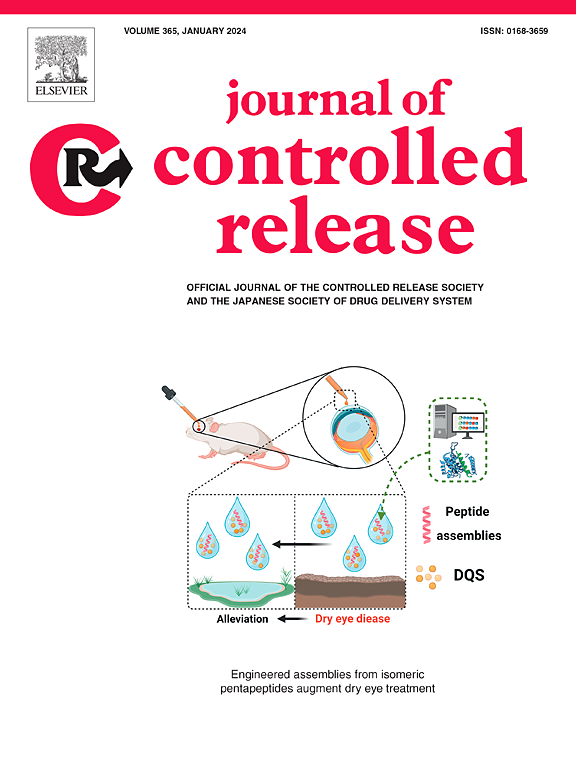Current strategies for senescence treatment: Focused on theranostic performance of nanomaterials
IF 10.5
1区 医学
Q1 CHEMISTRY, MULTIDISCIPLINARY
引用次数: 0
Abstract
Age-related diseases imposed heavy burdens to the healthcare systems globally, while cell senescence served as one fundamental molecular/cellular basis for these diseases. How to tackle the senescence-relevant problems is a hotspot for biomedical research. In this review article, the hallmarks and molecular pathways of cell senescence were firstly discussed, followed by the introduction of the current anti-senescence strategies, including senolytics and senomorphics. With suitable physical or chemical properties, multiple types of nanomaterials were used successfully in senescence therapeutics, as well as senescence detection. Based on the accumulating knowledges for senescence, the rules of how to use these nanoplatforms more efficiently against senescence were also summarized, including but not limited to surface modification, material-cargo interactions, factor responsiveness etc. The comparison of these “senescence-selective” nanoplatforms to other treatment options (prodrugs, ADCs, PROTACs, CART etc.) was also given. Learning from the past, nanotechnology can add more choice for treating age-related diseases, and provide more (diagnostic) information to further our understanding of senescence process.

当前的衰老治疗策略:关注纳米材料的治疗性能
年龄相关疾病给全球卫生保健系统带来沉重负担,而细胞衰老是这些疾病的基本分子/细胞基础。如何解决衰老相关问题是生物医学研究的热点。本文首先介绍了细胞衰老的特征和分子途径,然后介绍了目前抗衰老的策略,包括抗衰老和促衰老。由于具有合适的物理或化学性质,多种类型的纳米材料已成功地用于衰老治疗和衰老检测。在积累有关衰老的知识的基础上,总结了如何更有效地利用这些纳米平台抗衰老的规律,包括但不限于表面修饰、材料-货物相互作用、因子响应等。将这些“衰老选择性”纳米平台与其他治疗方案(前药、adc、PROTACs、CART等)进行了比较。从过去的经验中学习,纳米技术可以为治疗与年龄有关的疾病增加更多的选择,并提供更多的(诊断)信息,以进一步了解衰老过程。
本文章由计算机程序翻译,如有差异,请以英文原文为准。
求助全文
约1分钟内获得全文
求助全文
来源期刊

Journal of Controlled Release
医学-化学综合
CiteScore
18.50
自引率
5.60%
发文量
700
审稿时长
39 days
期刊介绍:
The Journal of Controlled Release (JCR) proudly serves as the Official Journal of the Controlled Release Society and the Japan Society of Drug Delivery System.
Dedicated to the broad field of delivery science and technology, JCR publishes high-quality research articles covering drug delivery systems and all facets of formulations. This includes the physicochemical and biological properties of drugs, design and characterization of dosage forms, release mechanisms, in vivo testing, and formulation research and development across pharmaceutical, diagnostic, agricultural, environmental, cosmetic, and food industries.
Priority is given to manuscripts that contribute to the fundamental understanding of principles or demonstrate the advantages of novel technologies in terms of safety and efficacy over current clinical standards. JCR strives to be a leading platform for advancements in delivery science and technology.
 求助内容:
求助内容: 应助结果提醒方式:
应助结果提醒方式:


